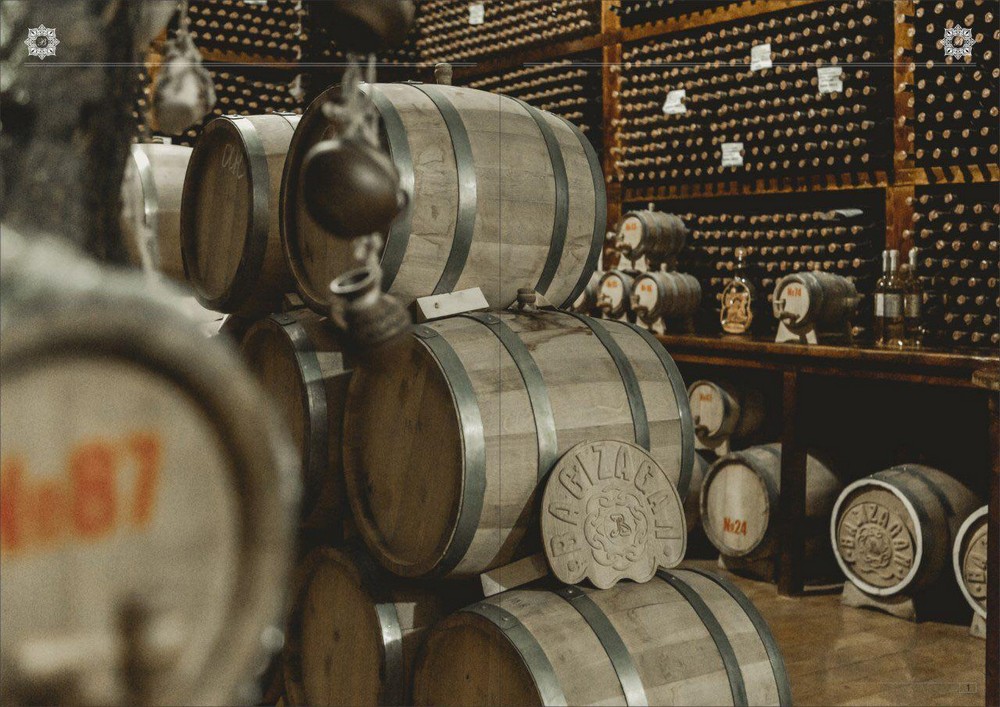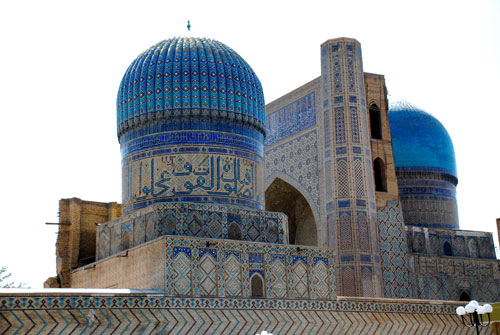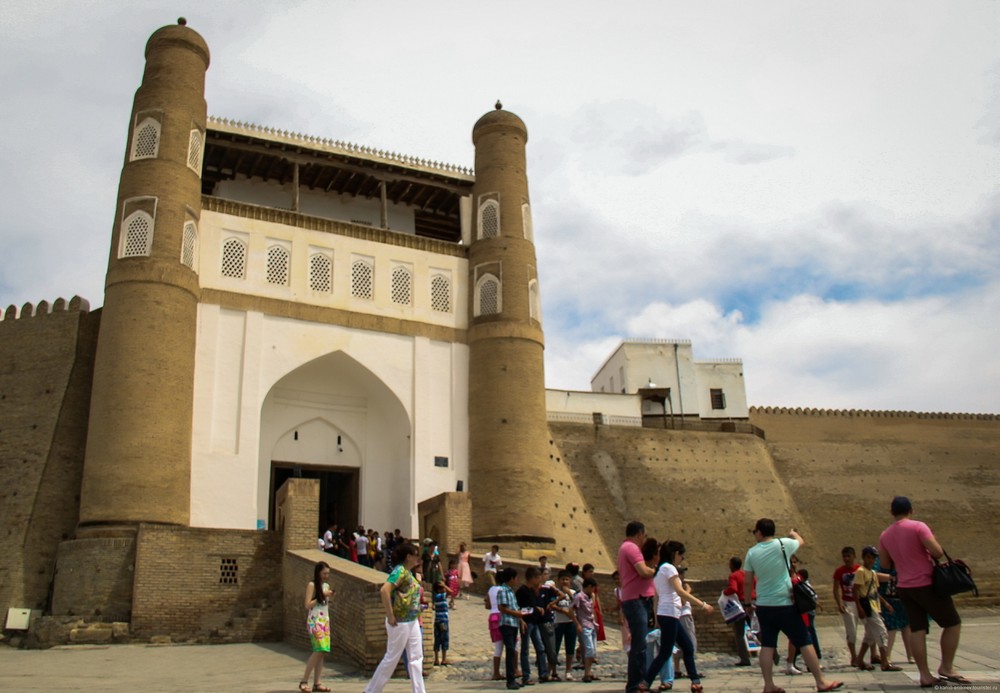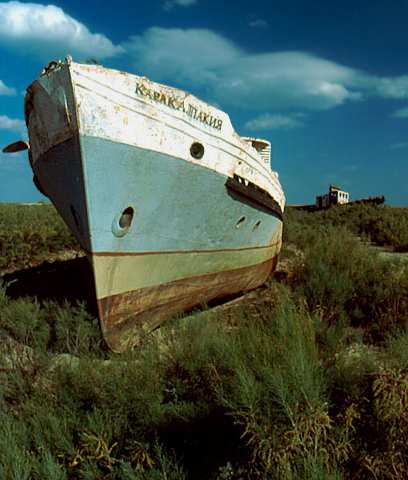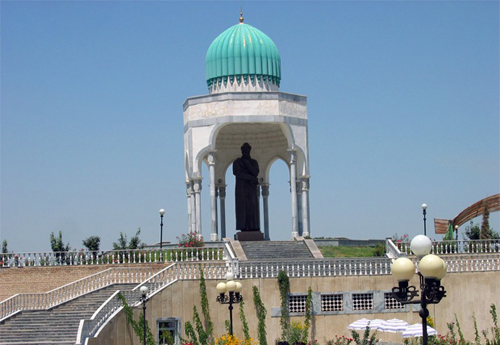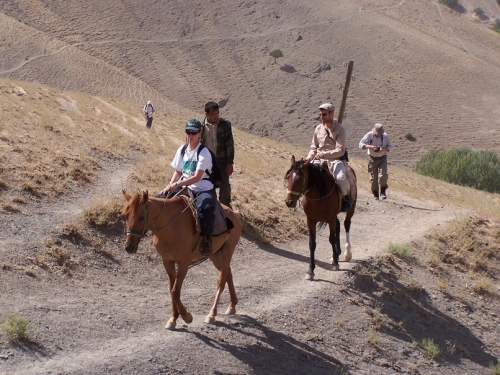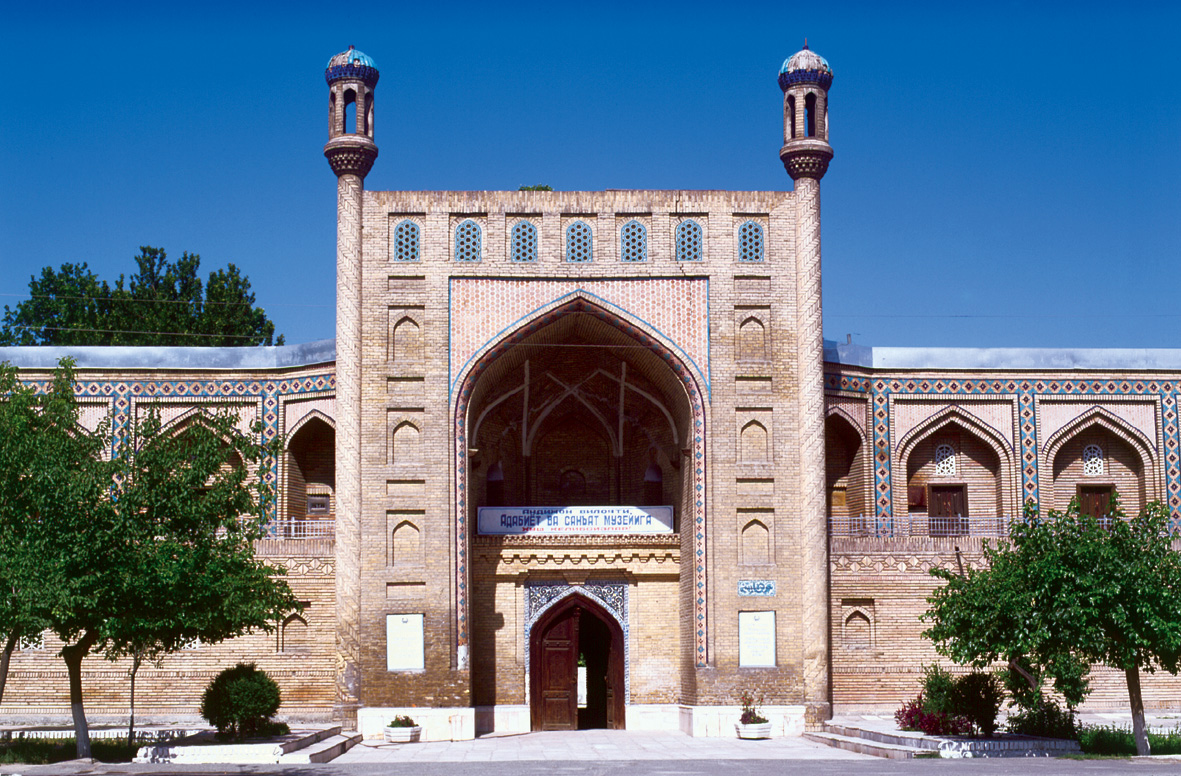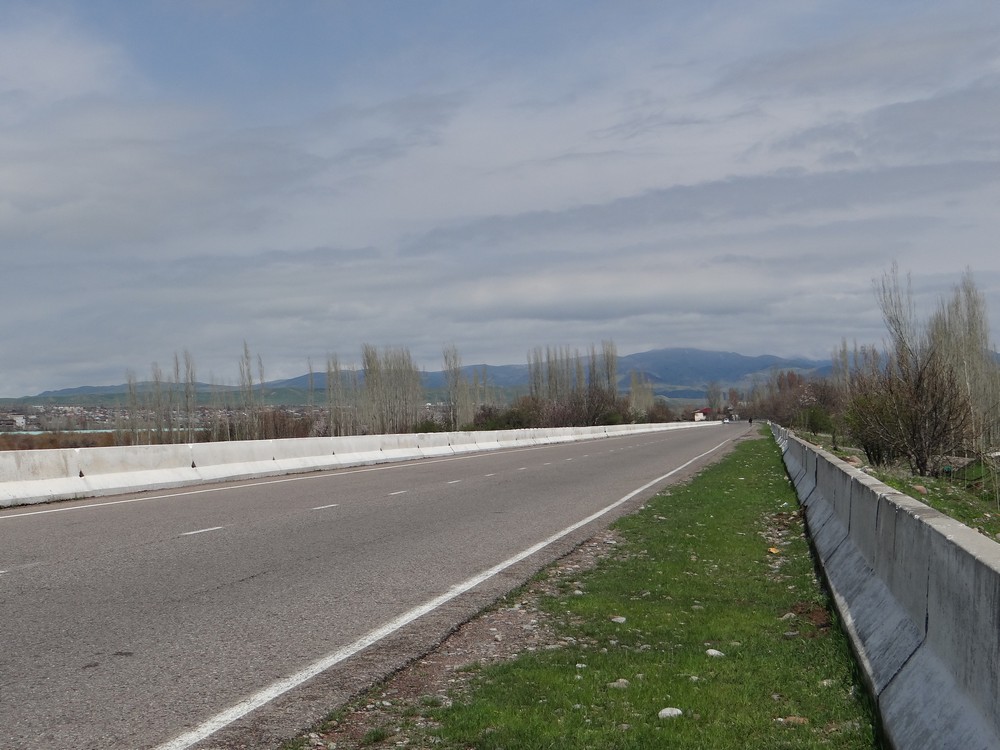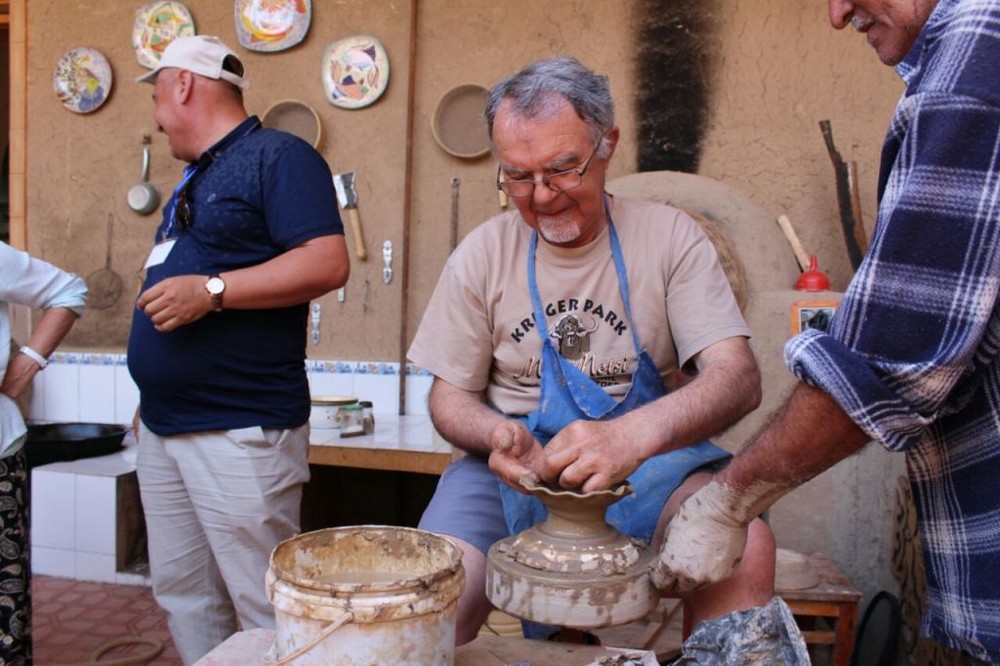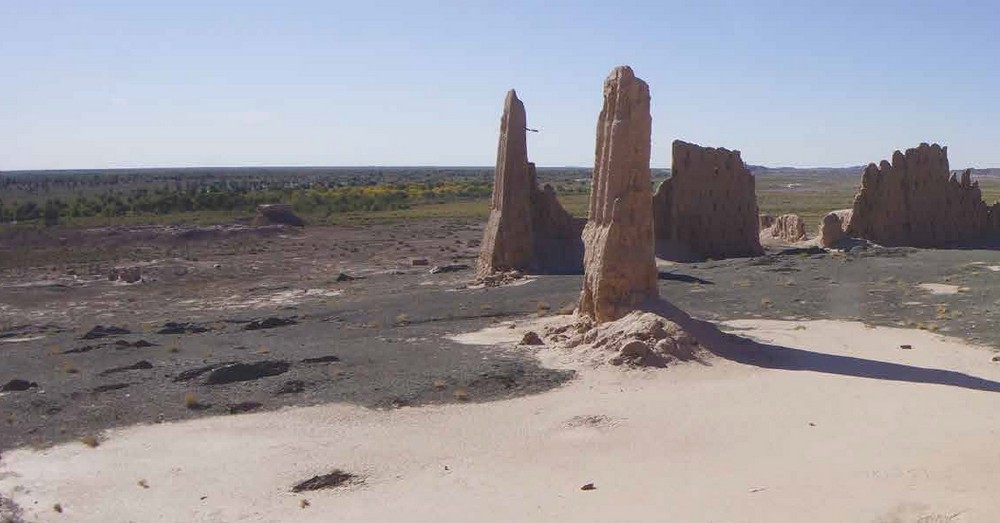Tours and Itineraries in Samarkand
This section is to help design a one-day or two-days tour of Samarkand which would cover all its sights, attractions and landmarks in the most effective way. The proposed itineraries have been developed by tourism practitioners over years aiming at:
- covering all monuments and places to visit in Samarkand such as bazars, museums, galleries, etc.;
- visiting each site at the best time and approach it from the easiest angle to make photos or videos;
- visiting each site with minimal effort and time, leaving more time for sightseeing, leisure, shopping and other activities;
- reducing transportation costs and tour guide workload;
- harmonizing the entire tour experience.
Tour of Samarkand as a part of country tour around Uzbekistan
Samarkand is centrally located in the country, being in the middle of any tour of Uzbekistan that aims to cover all important cities, regions and areas of the country. Typically, an uzbek tour operator would offer a so called circular tour: it means that you should travel through the country in circular movements or loops. This allows to visit each city and location with least possible effort and cost, without having to travel there and back on the same routes. A good principle for such as tour is: you never use the same road twice. It means that every new transfer or excursion takes you to see new places and get new impressions and memories.
See below an example of a cicular tour around Uzbekistan - Maveranahr, Great Empire of Timur
|

|

| size: %
|
| |
| | A Circular Tour of Uzbekistan
|
History
Samarkand, a legendary city on the Great Silk Road, capital of mighty warlords and romantic home for renowned poets, still shines as the brightest star among historical and cultural
centers of the present world. It is one of the most popular travel destinations in Central Asia
[≡] [+]
Read more about history of Samarkand
Samarkand's favorable geographic location, comparatively mild climate,
abundance of rivers and springs with sweet water brought stone age people
here. In the bronze age 3,500 - 5000 years ago inhabitants of the area were
making fine bronze bracelets and tools.
2300 years ago Alexander the Great approached the city walls with his
invincible iron phalanx and was amazed at the beauty of its buildings and
the size of its fortress. He had to seige the city several times. Still,
his rule had only become stable here when he established family connections
with locals (he married a girl from local aristorcracy.) In 712 AD Arabs
besieged the city. Led by Kuteiba, they used 300 catapults and
battering-rams to break through the fortifications and after a month of
stubborn fighting the city fell. Arabs looted and razed the city, thousands
of citizens were driven into slavery.
By 1220, Samarkand was on a rise again. The word
about marvelous buildings, gardens and mosques, precious stones and
jewelry, fine silk fabrics and skillfully designed clothing was spread
around and the wealth of the city attracted insatiable predators to it.
Black hordes of Genghis Khan plundered and demolished the city and killed
thousands. For decades Samarkand remained under Mongolian oppression which
strangled the progress in the area.
It took one and a half century for the city to revive,
first as the capital of the Great Tamerlaine, Shaker of the
Universe, then as the glorious cultural and scientific center of the
medieval East under the rule of Ulugbek, Tamerlaine's grandson. Now
Samarkand is a place where the unique spirit of the antiquity is carefully
preserved. The peculiar combination of its splendid monuments and
surprising richness of the cultural tradition is strongly felt by
newcomers.
Sights and Landmarks
Samarkand has many interesting places to visit, both historical and modern. Typically, travelers spend one day (intense) or two days (more relaxed) to visit traditional landmarks, monuments and historical buildings during a city tour.
[≡] [+]
Read more about sightseeing in Samarkand
Registan Square
This is a centrally located square, with three religious schools (madrassah) built by various local rulers at different times. This place is a must-see attraction, around which are built itineraries across Samarkand. It is at the discretion of the tour organizer whether to see the Registan as the first location or as the final wrap-up landmark. Many people visit the Registan twice during a city tour, first time in the daylight, and secondly at night, when the place is beautifully lit and less crowded.
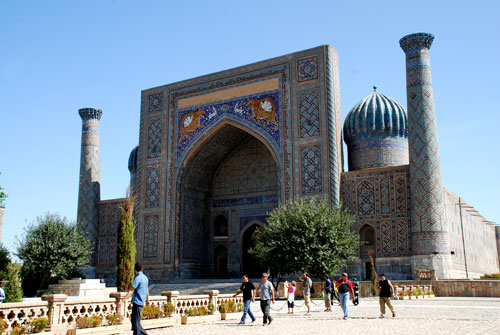
Registan Square View
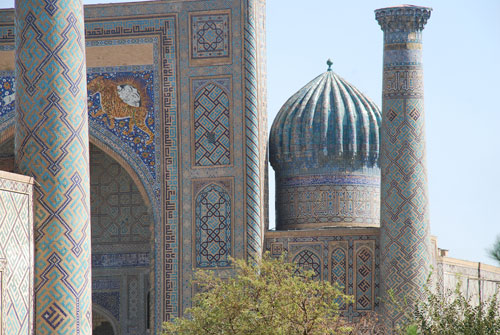
Sherdor Madrassah on Registan, Samarkand
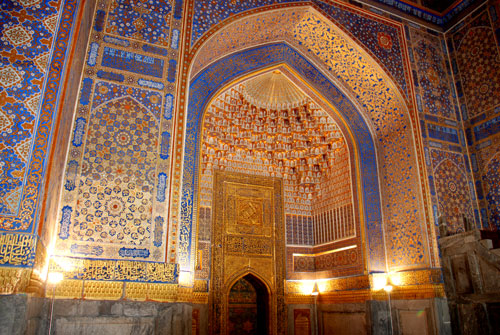
Golden Mosque on the Registan Square
See more about Registan Square
Shahi Zindah Complex (Tomb of the Living King)
Another popular place where guests touring Samarkand are bound to arrive, is Shahi Zindah.
The unique ancient monument of Shahi Zindah is situated on the south-east slopes of
the Afrosiab ancient ruins.
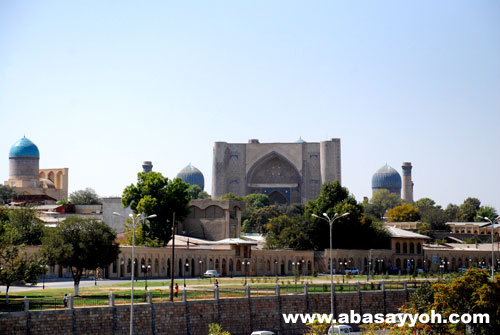
View of Samarkand
Its buildings encompass almost all 25
centuries of the city's history. The name refers to its original innermost
and holiest shrine - a set of cool and quiet rooms around what is
considered to be the grave of the Prophet Muhammad's cousin, Qusam
Ibn-Abbas. He was one of missionaries who brought Islam to this area and
the complex has therefore become an important pilgrimage destination. Most
of the tombs and mausoleums in the complex date to Timur's
period.
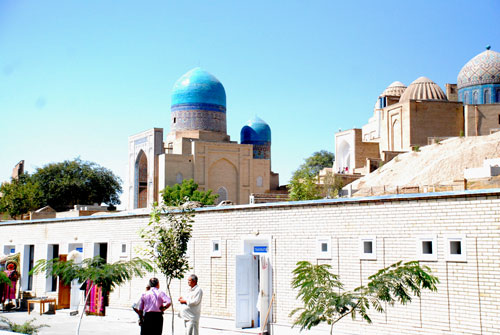
Shah i Zindah, Samarkand
See more about Shahi Zindah Complex
Bibi-Khanum Mosque
Guests visiting Samarkand should plan this place as a must destination. Victorious battles in India suggested to Timur that a mosque should be built that would surpass anything else ever built in the world and to glorify his empire for centuries to come. Hundreds of artisans, architects and builders were brought to Samarkand. The construction took five years
(1399-1404) and upon return from another military campaign he found the Mosque ready. Bibi-Khanum is said to be the senior of Timur's wives, however the historical records mention her name as Saray-Mulk Khanum.
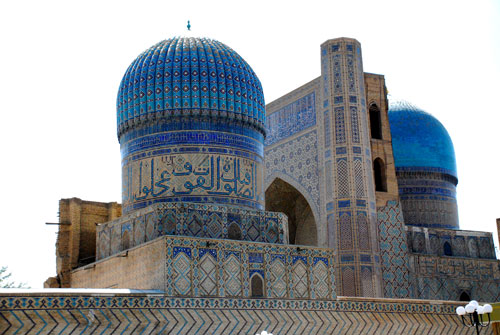
Bibi Khanum Mosque
See more about Bibi-Khanum Mosque
Observatory of Ulugbek
Tourists in Samarkand always visit this site, because it is quite unusual.
Greatest astronomer of the Middle Ages, Ulugbek owed much of his glory to the miraculous Observatory he ordered to build in Samarkand in 1428. It was a gigantic cylinder-like building with 30 meters in height and 46 meters in diameter. The great size of the main sextant instrument and amazingly accurate positioning along the meridian provided for unprecedented accuracy ofmeasurements which was not surpassed until telescope was invented by Galileo. Ulugbek and his associates elaborated a Star Catalogue containing 1018 stars and constellations. After Ulugbek was treacherously murdered by his son, the Observatory was leveled to the ground and for five centuries people could not find it. In 1908 Vyatkin, a Russian amateur-archeologist, re-discovered it.
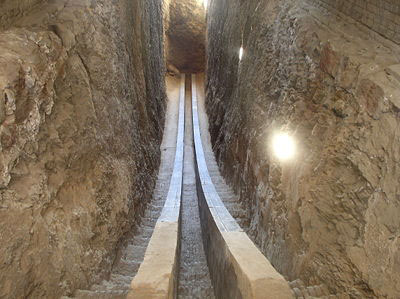
Ulugbek's Observatory
See more about Observatory of Ulugbek
Gur Emir Mausoleum
Gur Emir (or Gur Amir, a different pronunciation) is a pearl of Samarkand, local Mecca for tourists and guests of the city. In 1404, a beloved grandson of Timur, Muhammad Sultan, whom the Great Emperor wanted to be on the throne after his death, prematurely died. Timur was desperate and ordered to build for him a wonderful mausoleum in Samarkand. For himself he had prepared a modest crypt in his native town of Shahrisabz. A year later, Timur died on the way to China
and, as some records indicate, because of impassable mountain roads and heavy snows he too was buried in the sumptuous Guri Amir Mausoleum.
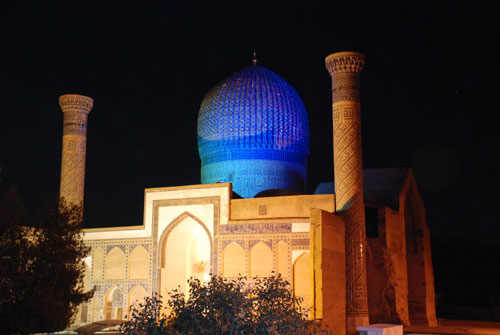
Masoleum Guri Amir, Samarkand
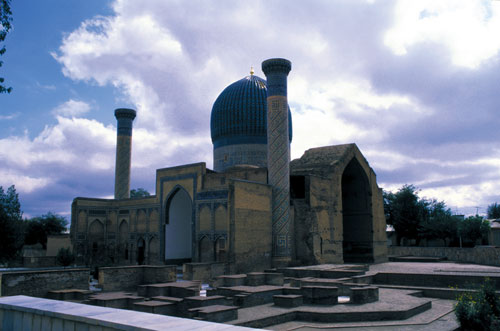
Dome of Gur Amir Masoleum
This mausoleum surmounted by a splendid bright-blue fluted
dome also contains the tombs of Timur's two sons, Miranshakh and Shakhruh,
great astronomer Ulugbek, Timur's religious teacher Mir Seiid Bereke and a
person named Shakh-Khodja.
See more about Gur Emir Mausoleum
Videos about Samarkand
|






















